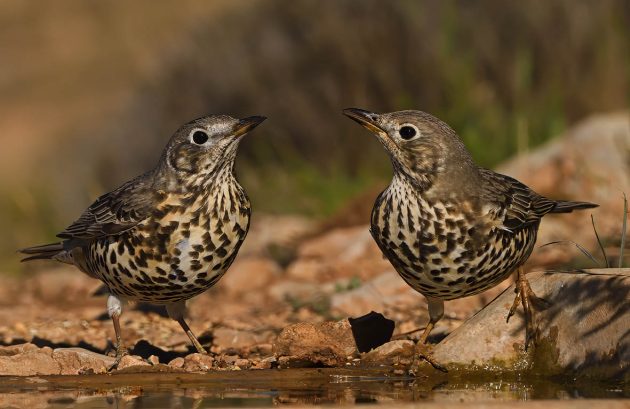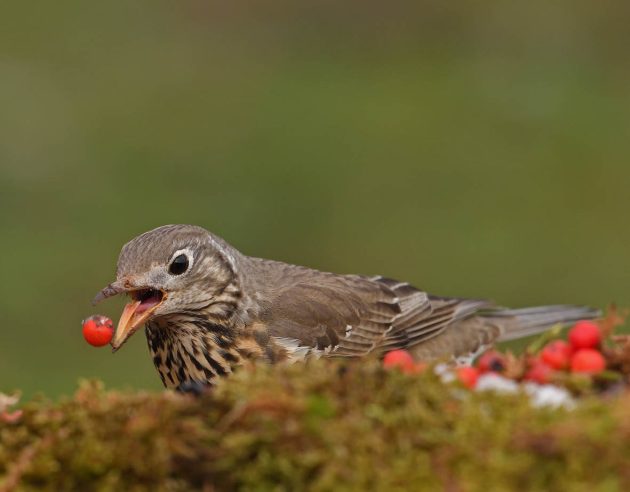Just two thrushes breed across much of the Iberian Peninsula: The Eurasian Blackbird (Turdus merula) and the Mistle Thrush (Turdus viscivorus). Two others have a limited breeding distribution in the north: Song Thrush (Turdus philomelos) across the Cantabrian Mountains and the Pyrenees, and Ring Ouzel (Turdus torquatus) in the Pyrenees. Come this time of year and the pattern changes radically as the peninsula is swamped with huge numbers of migratory thrushes.

In the south, the dominant migratory thrush numerically is the Song Thrush, arriving in large flocks with substantial numbers crossing the Strait of Gibraltar onto Morocco. These birds are largely of Scandinavian, German, Dutch and Baltic origin. Redwings (Turdus iliacus) also reach the south but in smaller numbers and never in the large flocks that winter further north in Iberia. These birds also reach Morocco. Scandinavia is the main source of these Redwings. Fieldfares are much scarcer in the south of Iberia than the north, where they form huge flocks, but do I see them regularly in the higher mountains close to Gibraltar. They are also of Scandinavian origin and some reach Morocco.



Ring Ouzels tell us a different story. In their case the mountains of the Iberian Peninsula, particularly the south and east, and Morocco form a major wintering stronghold. It is interesting that two sub-species meet here in the wintering grounds and may be seen alongside each other in the mountains: the darkly-coloured nominate sub-species, which breeds in the British Isles and Scandinavia, and the heavily-scaled alpestris from the mountain ranges of the Pyrenees, Alps and possibly other central European mountains.


The two species which have large and widespread breeding populations across the peninsula – Blackbird and Mistle Thrush – also have their numbers augmented in winter by migrants from the north. I recall ringing thrushes in the Biological Reserve at Doñana (SW Spain) and catching Blackbirds which were clearly migratory. Most noticeable were their long and pointed wings, which contrasted with the shorter, more-rounded, ones of the local birds. These migratory blackbirds come from central and north-western Europe – Germany, France, England, Switzerland. I sometimes come across Mistle Thrushes in unusual locations at this time of year and I attribute these to migratory birds on passage. These birds reach the southernmost limits of the wintering range in Morocco where they may mix with the local sub-species deichleri that is reported to perform its own altitude movements, to lower ground, in the winter.





A key feature of the thrush wintering in the Iberian Peninsula is the dependence on fruiting shrubs. In the mountains they are often associated with stands of juniper or hawthorn. Rowan are also favourites. Fieldfares are partial to apples. At Doñana, we would ring Song Thrushes, Redwings, Blackbirds and even Ring Ouzels in the autumn and winter. They were also in juniper stands, this time right down on the coast. Several recoveries of Redwings and Song Thrushes showed the extent of the nomadic movements of these thrushes during the winter, birds ringed in Doñana in November having traveled back north to the Pyrenees by January. Once again, the idea of a wintering ground, so ingrained in our minds, is not one that the birds themselves seem to subscribe to! It seems clear that the movements follow the ripening of the fruit, although how they know and find them is a bit of a mystery.
Source link

